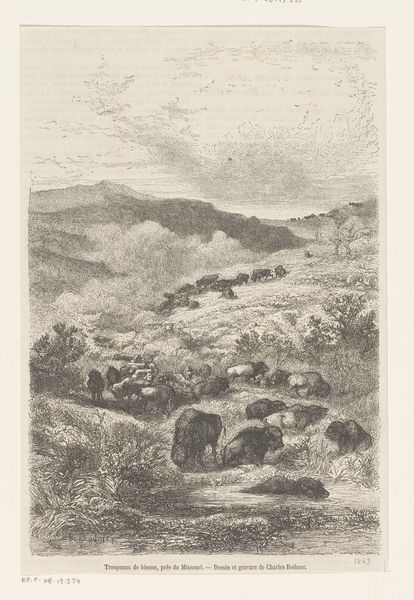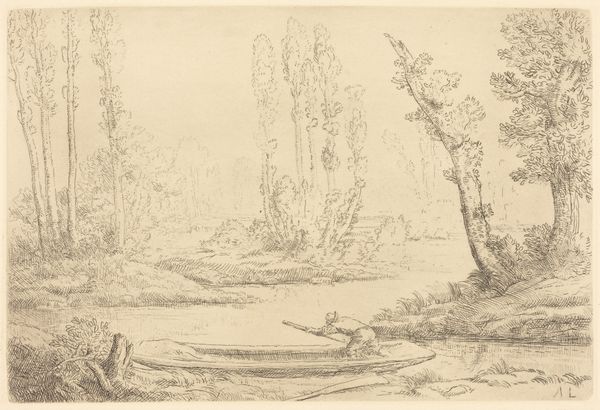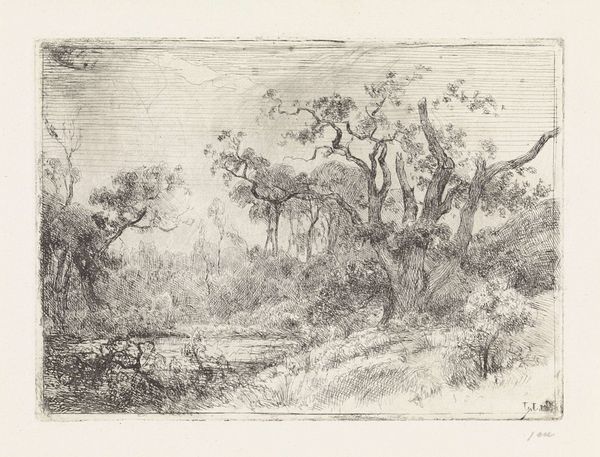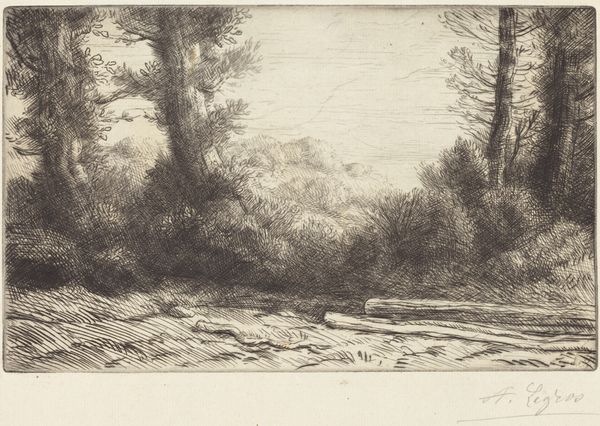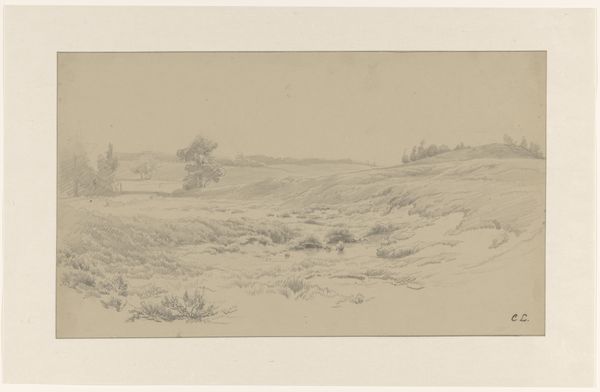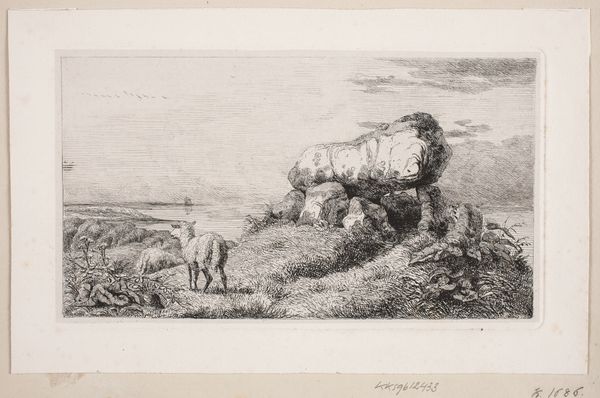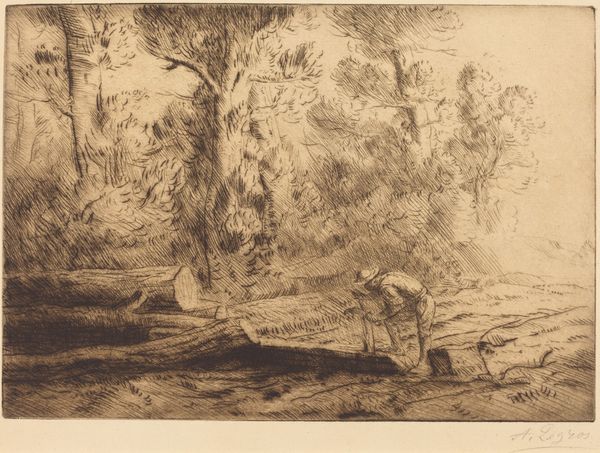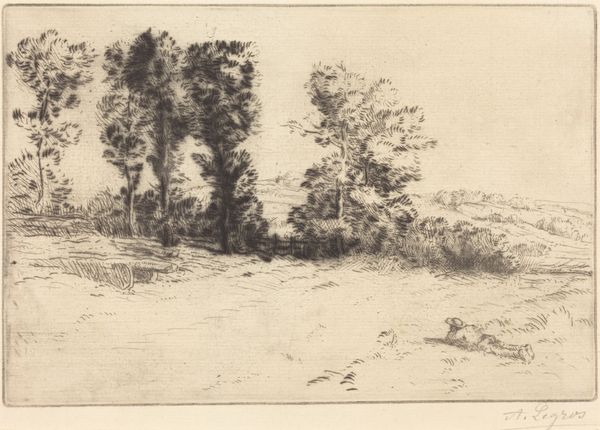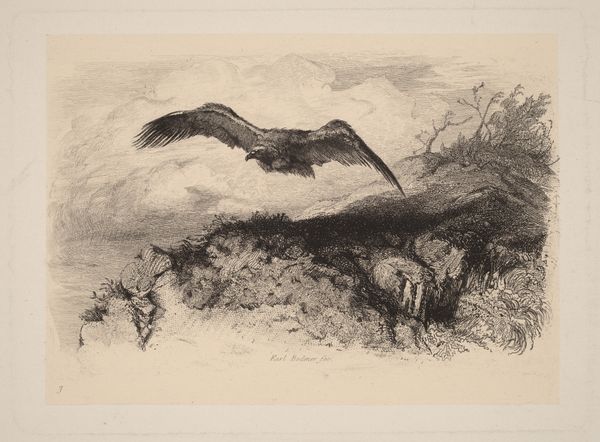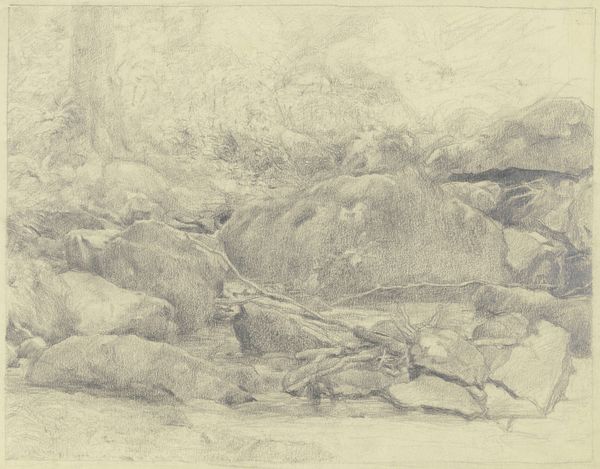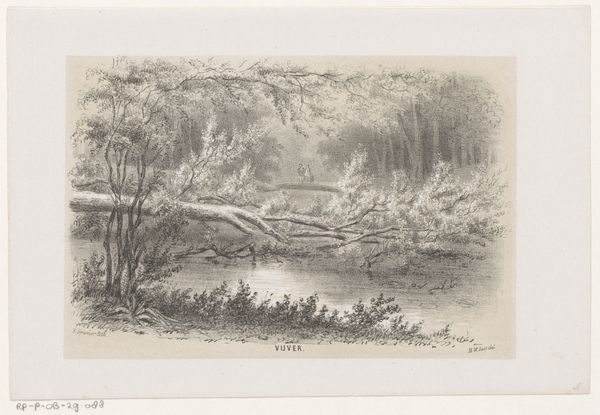
drawing, print, etching
#
pencil drawn
#
drawing
# print
#
etching
#
pencil sketch
#
landscape
#
bird
#
pencil drawing
#
realism
Dimensions: Sheet: 11 1/16 × 15 3/4 in. (28.1 × 40 cm) Plate: 9 3/4 × 13 3/4 in. (24.8 × 34.9 cm)
Copyright: Public Domain
Curator: Here we have Félix Bracquemond’s “Brumes du matin,” created in 1882. It's currently held at the Metropolitan Museum of Art. The piece is an etching, giving it a detailed, almost pencil-drawn quality. Editor: It’s very delicate. The textures create a misty, early morning feel as suggested in the title. The image is completely dominated by a swarm of birds foraging within the field. Curator: The composition reflects a growing interest in Realism at the time, which focused on representing the world as it is, not as idealized versions of it. Bracquemond had been involved in the revival of etching as a fine art medium, making it more accessible for artists. Editor: Look closely and you will realize that there is a real emphasis on process here. The visible lines show the labour and craft that go into the etching, pushing the boundaries of "high art." You have a definite sense of the artist engaging directly with the material. Curator: This kind of scene aligns with the broader art market and rising middle class’s appetite for landscapes and nature scenes. Images that reminded them of the countryside even if they spent most of their time in the urban sphere. Editor: I see the work offering a depiction of land use as material for hunting, both representing an industry and form of recreation in society. I wonder, too, about the socio-economic status of those consuming the image itself? Curator: That's a good point; these images entered a complex market with different classes consuming art in distinct ways. Consider that printmaking allowed for wider circulation than painting, impacting both the artist’s income stream and the artwork's political message. Editor: Yes, these visual reproductions make Bracquemond’s craft much more readily accessible and raise considerations around what an artwork's intrinsic worth is within an early, developed age of mechanical reproduction. Curator: Reflecting on "Brumes du matin," I’m struck by how it captures the evolving art world. The interplay of artistic skill, social dynamics, and economic systems make it an intriguing case study. Editor: For me, it's about the labour and the visible skill. We must not forget how these are made, celebrating craft in and of itself.
Comments
No comments
Be the first to comment and join the conversation on the ultimate creative platform.
